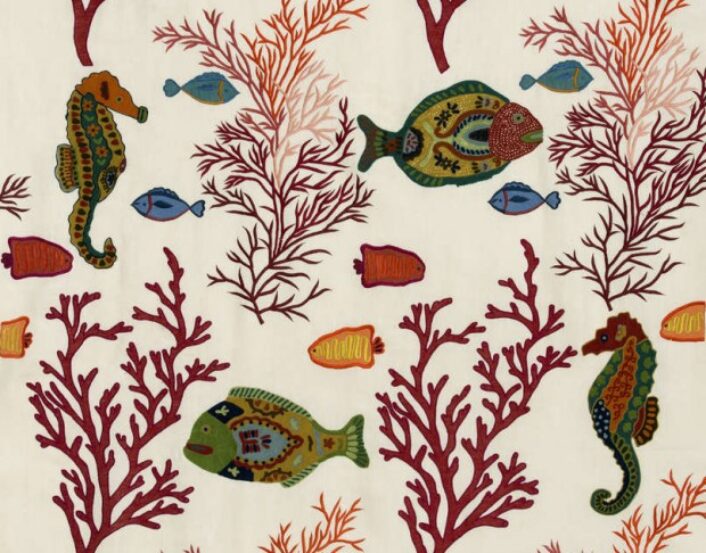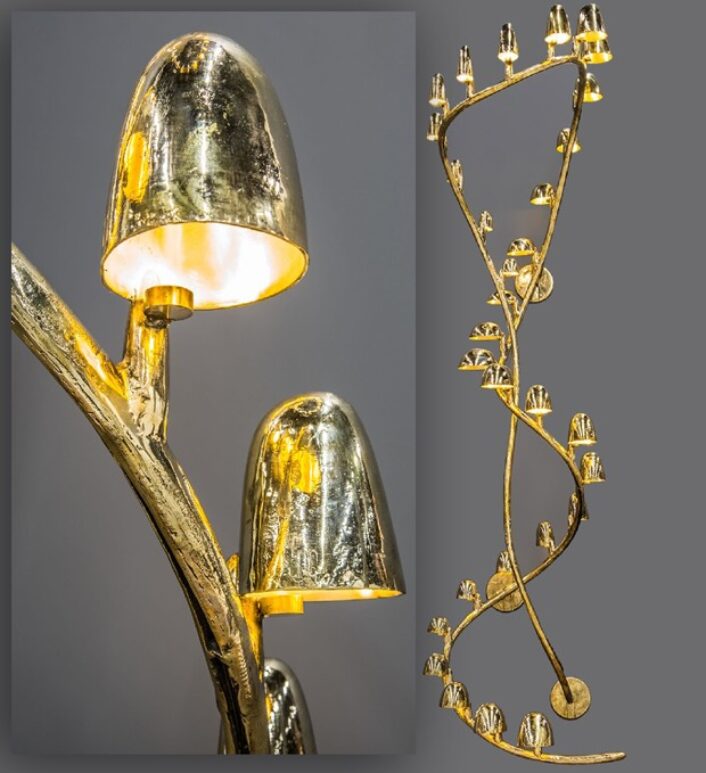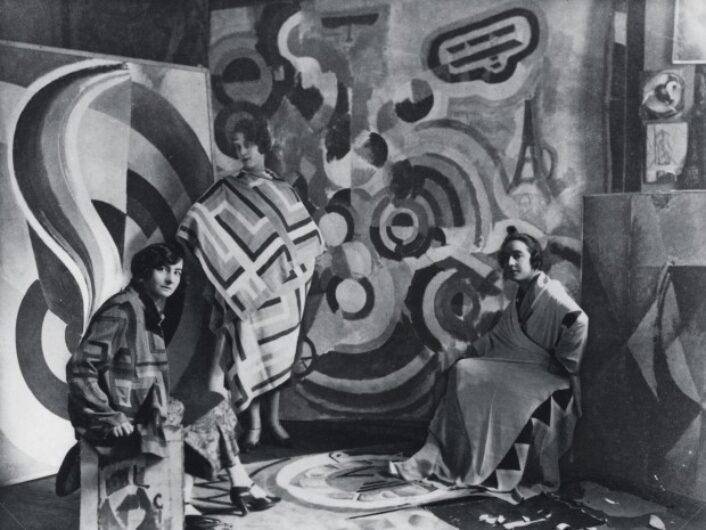Culture
Kravet’s enormous fabric archives on public view!
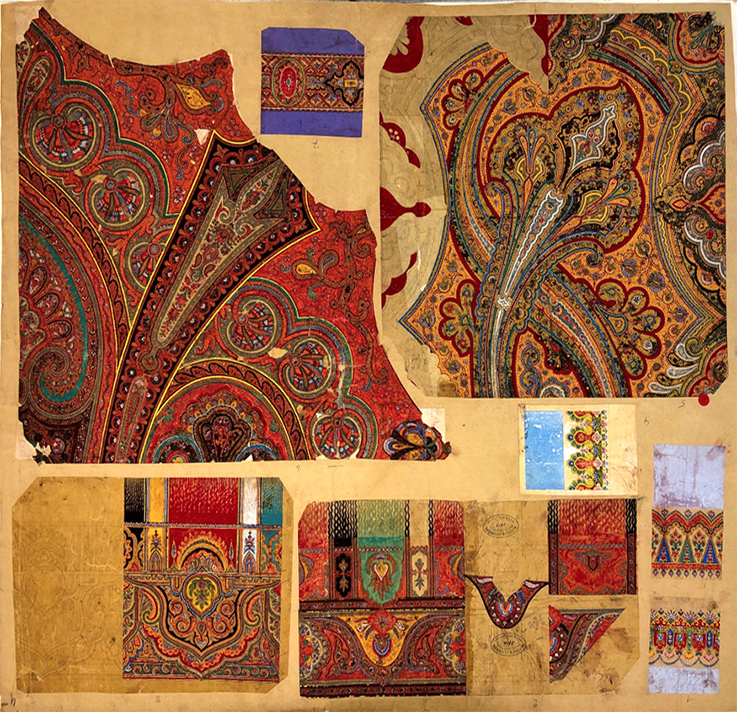
Sketchbook Plates for Paisley.
Image courtesy of: Rug News and Design
When the name Kravet comes up, colors and patterns instantly come to mind. This fall, the New York School of Interior Design provided the public the opportunity to view Kravet’s archival source material. The 101-year-old textile company has been the leader in to-the-trade textiles both for home furnishings and the hospitality industries for a very long time. What a treat that the public was able to view these historic textiles via a wonderfully curated show.
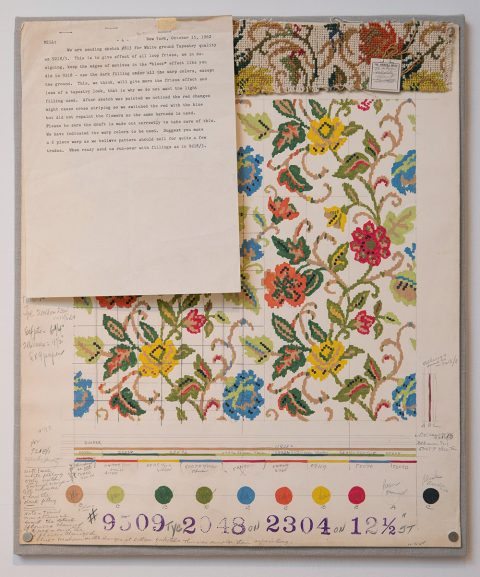
Point paper drawing featuring a floral pattern from Orinoka Mills. The note attached contains weaving instructions from the mill’s designer, specifying: warp, density, and repeat.
Image courtesy of: 1st Dibs, photographed by: Matthew Carasella
The story behind the company is fascinating. In 1903, Sam Kravet arrived from Russia with “nothing but the clothes on his back and a sewing machine.” After stays in Detroit and Ottawa, Sam settled in New York’s Lower East Side and opened a tailor shop. Quickly, Kravet’s “atelier” became the bespoke locale for the upper crust of Manhattan society. Scott Kravet, Sam’s great-grandson, says “Guys would arrive for fittings in chauffeured cars.” Sam would make the pieces and travel uptown to the brownstones and mansions on the Upper East Side to deliver the finished wares.
Kravet followed the tailor shop with a passementerie where he sold tiebacks, corded rope and all the trimmings necessary for beautiful designs. This storefront opened in 1918 and was located on Norfolk Street.
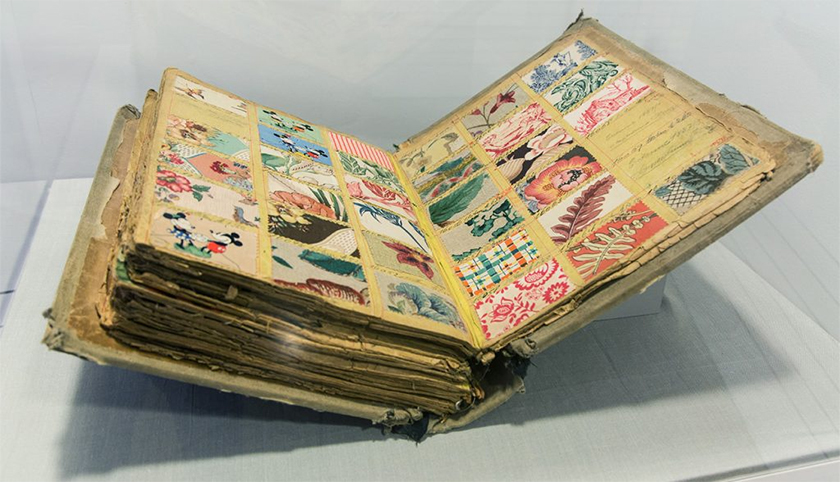
Design collages and fabric samples from the 1930’s- 1940’s. These items fill a bound ledger from the archives of GP & J Baker, the British textile company under Kravet’s umbrella.
Image courtesy of: 1st Dibs, photographed by: Matthew Carasella
The show presents eighty examples from the Kravet archive, “Pattern and Process: Selections from the Kravet Archive.” Textiles range from a fragment of ancient printed Egyptian cotton to a 19th-century Kashmiri paisley shawl to a 1960’s pop floral (a pattern which Kravet is commonly associated with).
Obviously, the items on display represent just a small portion of Kravet’s wide holdings. Kravet also has Lee Jofa and Brunschwig & Fils under its umbrella. It is believed that Kravet possesses over 60,000 pieces of fabrics and related artifacts in its archives.
We can thank Scott Kravet, the company’s chief creative director and fourth-generation manager, for this extraordinary repository. With 43 showrooms worldwide and 1,100 employees, Kravet maintains that this is and will always remain very much a family affair. Behind the show’s motivation, Kravet says, “Why have an archive, if you don’t share it”.
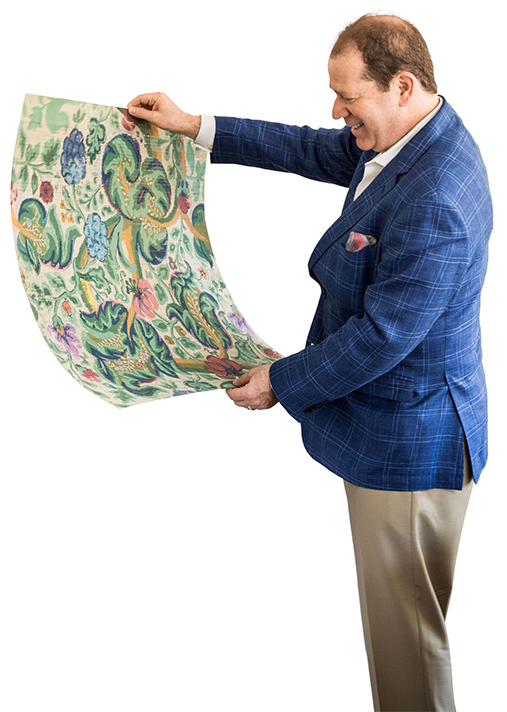
Scott Kravet is known, in the industry, as the “Indiana Jones of fabric world”.
Image courtesy of: Traditional Home, photographed by: Lesley Unruh
This show would not have been possible had it not been for Scott Kravet’s immense enthusiasm. It was in the rubble of an abandoned factory in Europe that he found old looms and wooden warpers… and among them Kravet discovered a portfolio of 3,500 fabric pieces from the late 19th and early 20th-century. These treasures were filled with original ink and gouache drawings of various motifs such as Art Deco butterflies, Bauhaus geometries, and Chinoiserie patterns.
On another trip, to Lake Como, Kravet visited the home of an antique textiles dealer from whom he had previously purchased hand-painted Persian prints. It was here, hidden in a corner, that Kravet spied original 1920’s artwork for a woven tapestry. The perfectly colored illustration of a Middle Eastern souk is set against a background of palm trees, camels, and temples. These now rest in Kravet’s Manhattan design studio on West 21st Street.
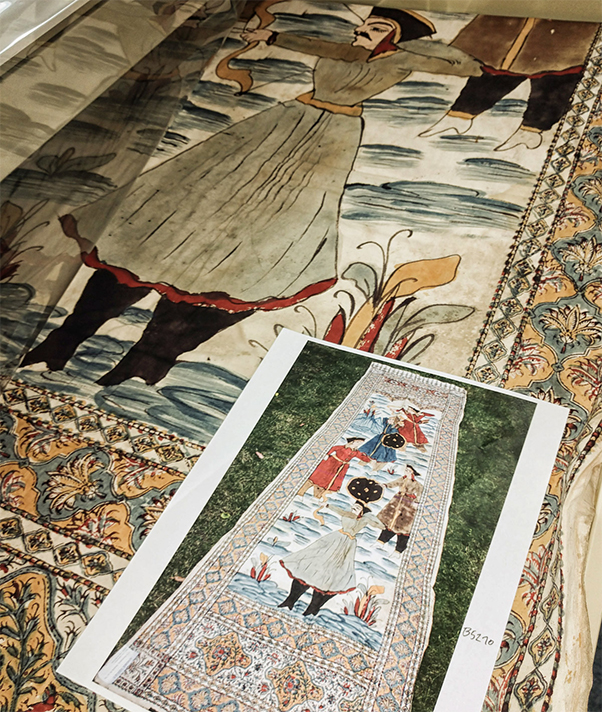
Kravet samples.
Image courtesy of: High Point Market
Perhaps part of the reason that Kravet is so adamant about finding these antique treasures is because they provide a springboard for current designers. Kravet says, “When the Brunschwig team imagines a new collection, they go back to the classics.”
It must be fun to join the design team as they visit the climate-controlled storage facility at the company’s headquarters in Bethpage, New York. It was in this building that the team found inspiration for this year’s selection of fabric and wall-coverings which includes one of Brunschwig’s signature patterns, Les Touches, a stylized animal print from the mid-20th century in nine new color ways. Treasures indeed!
